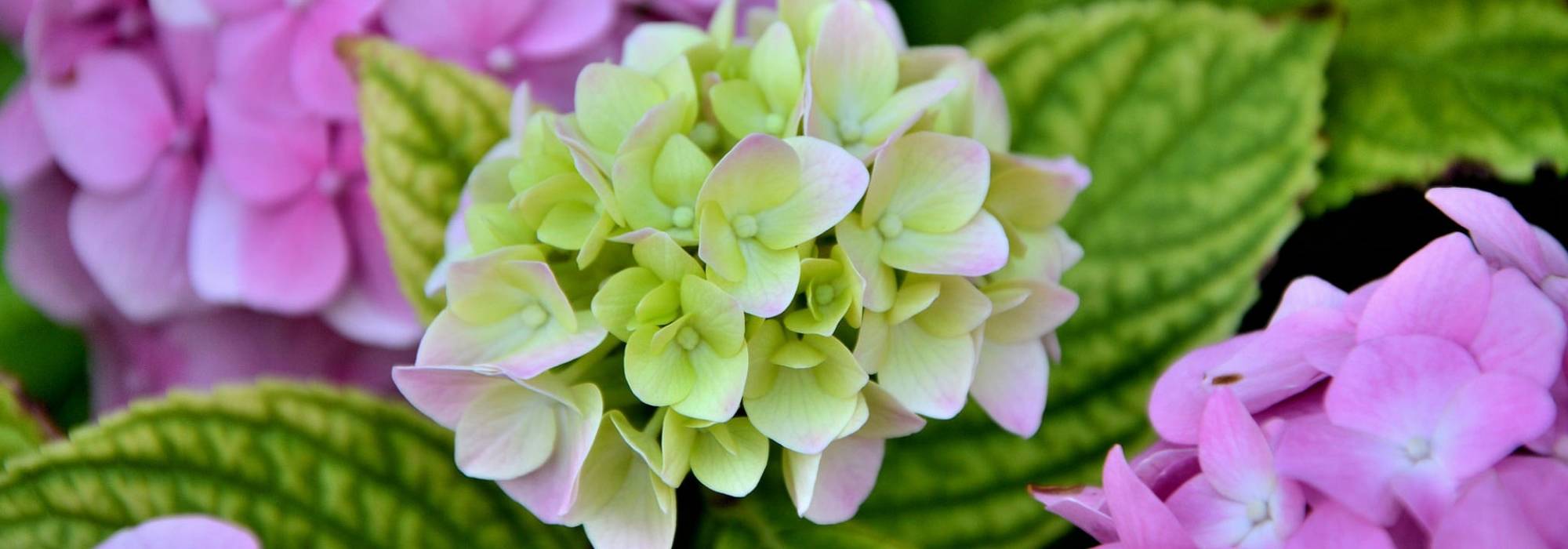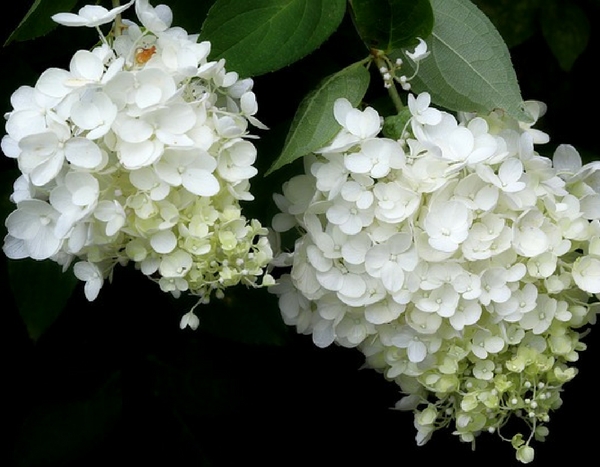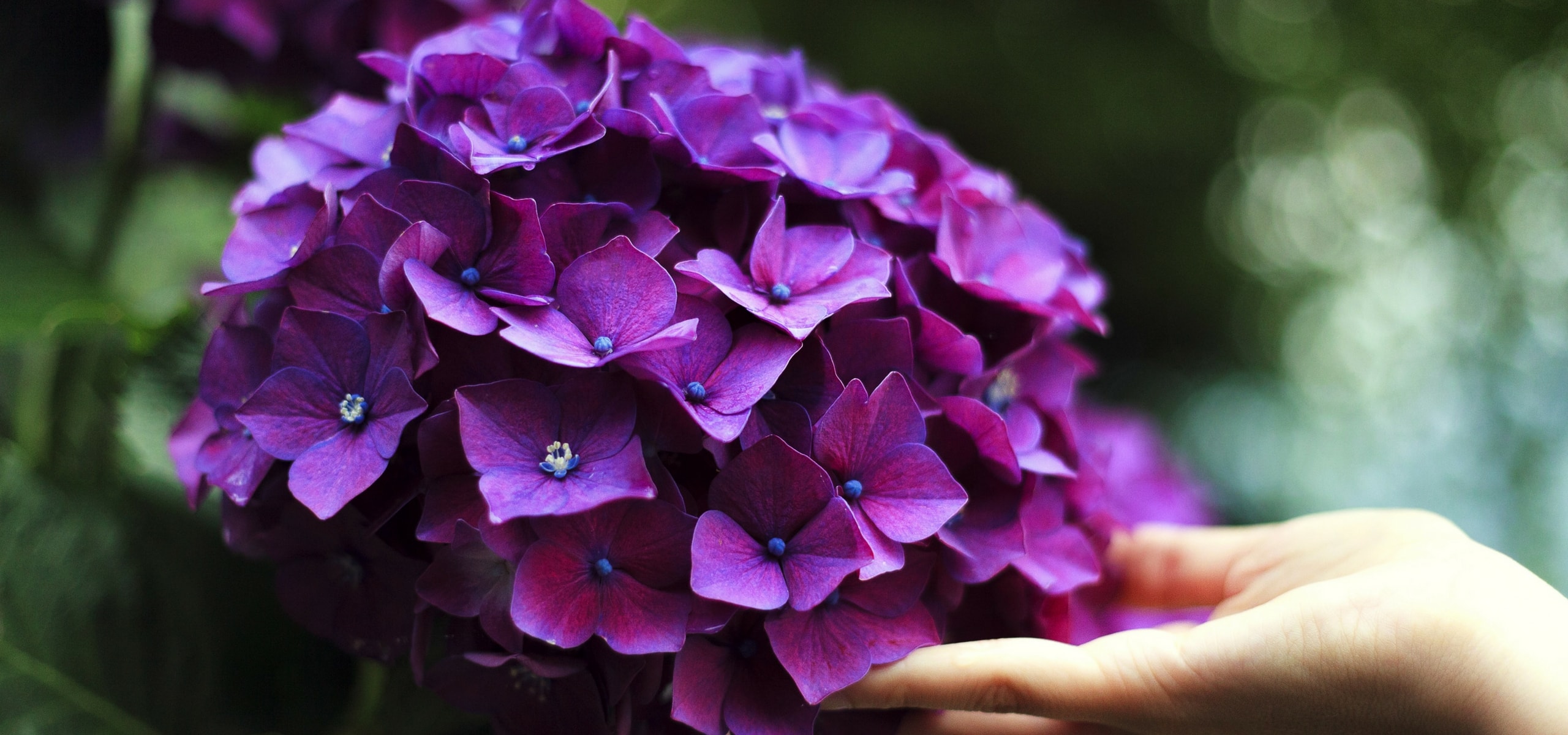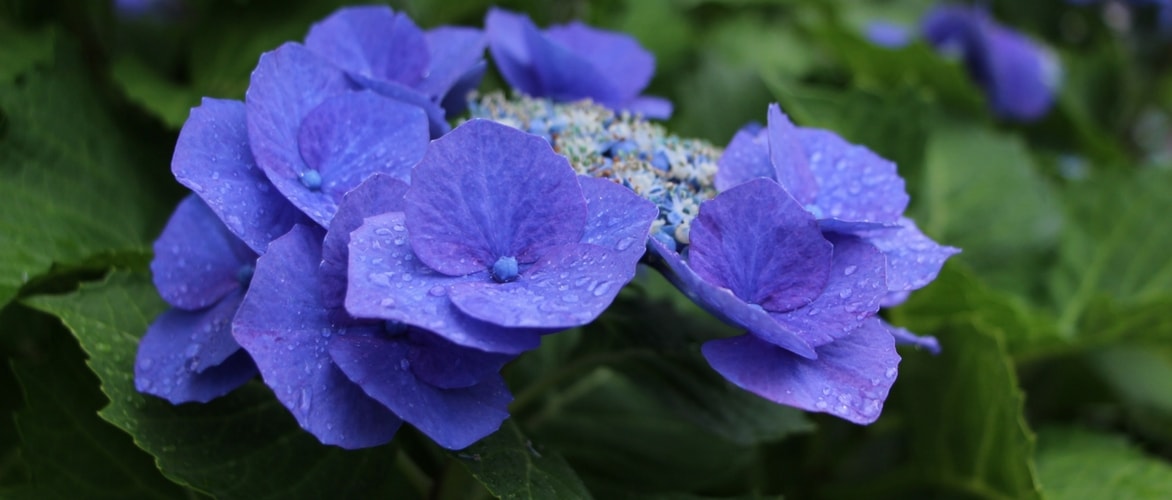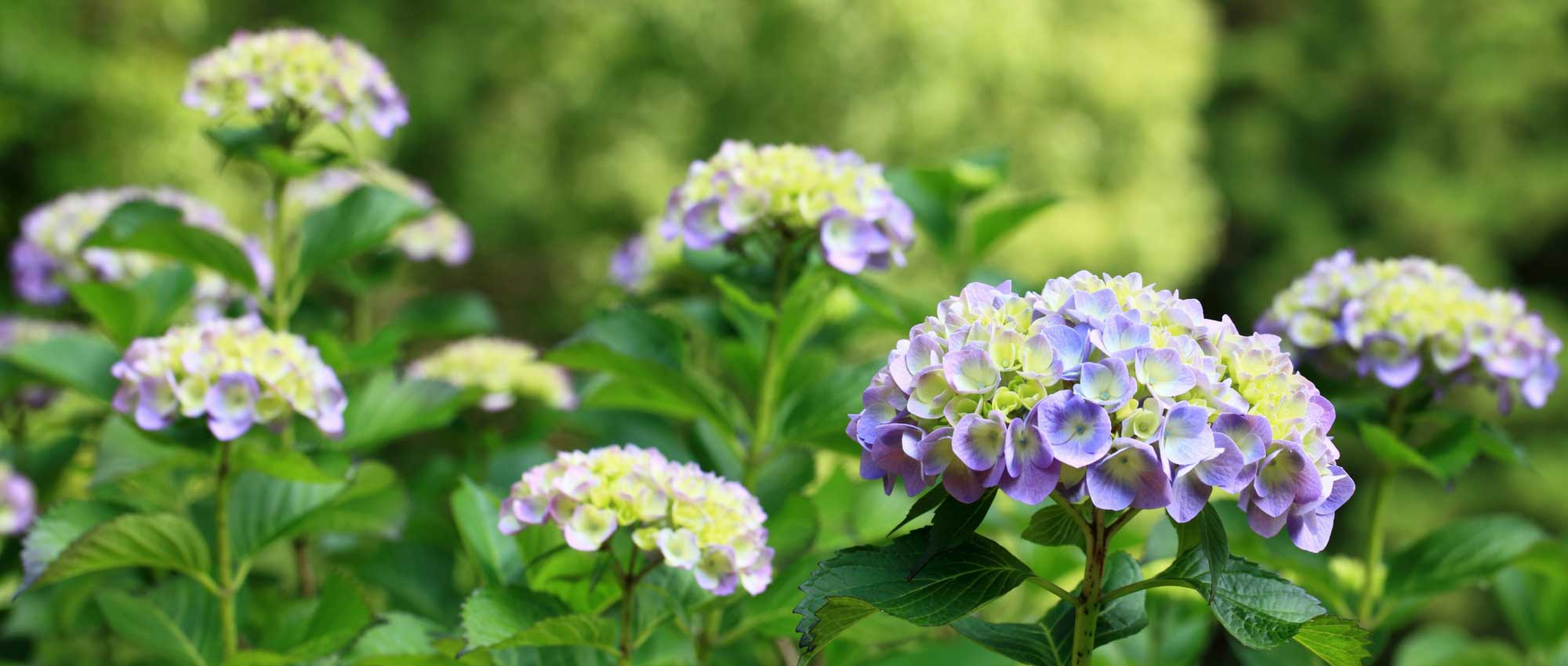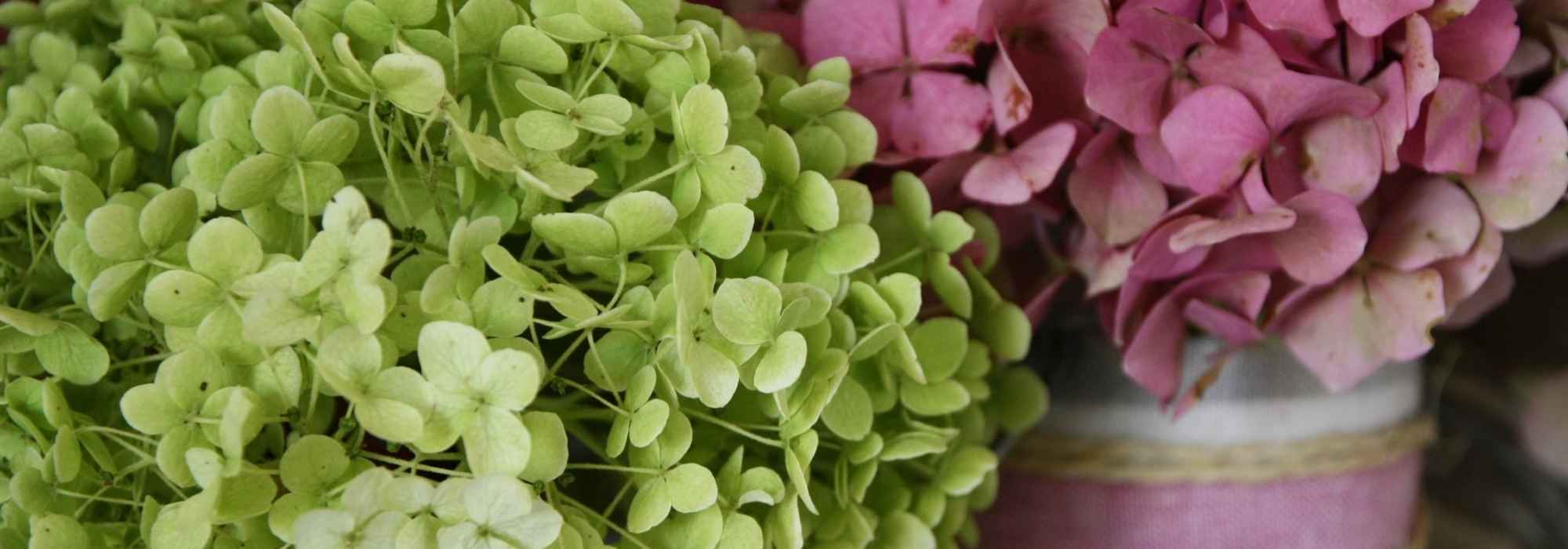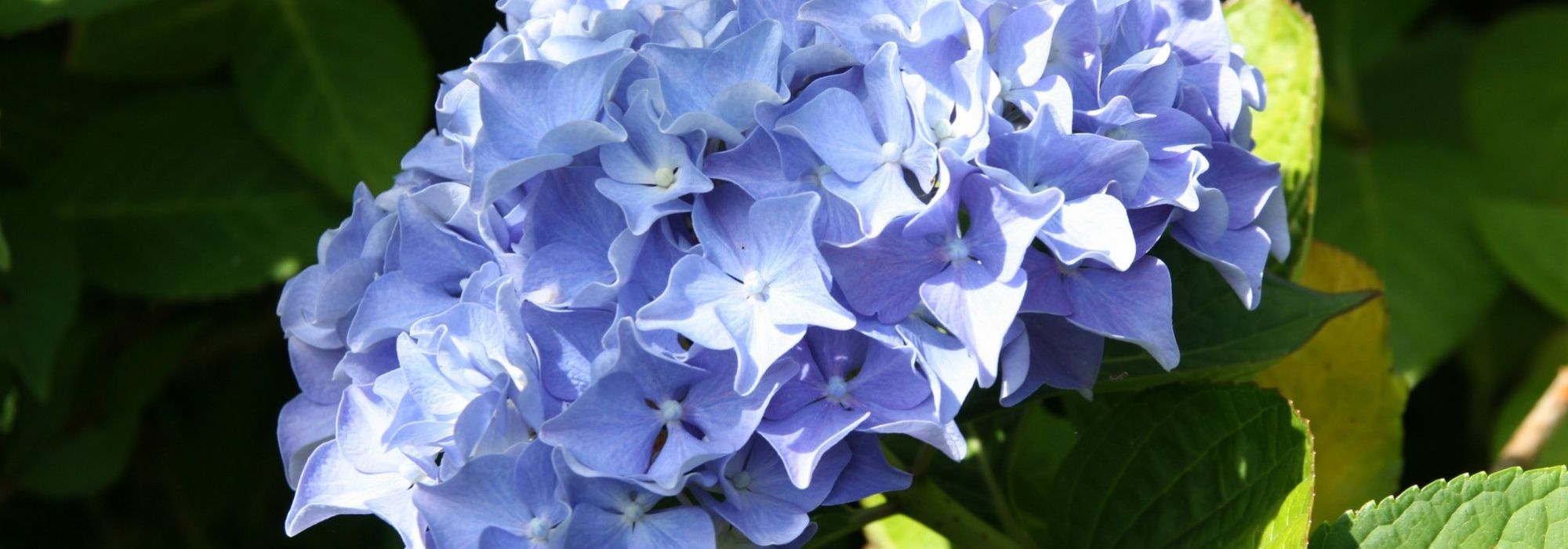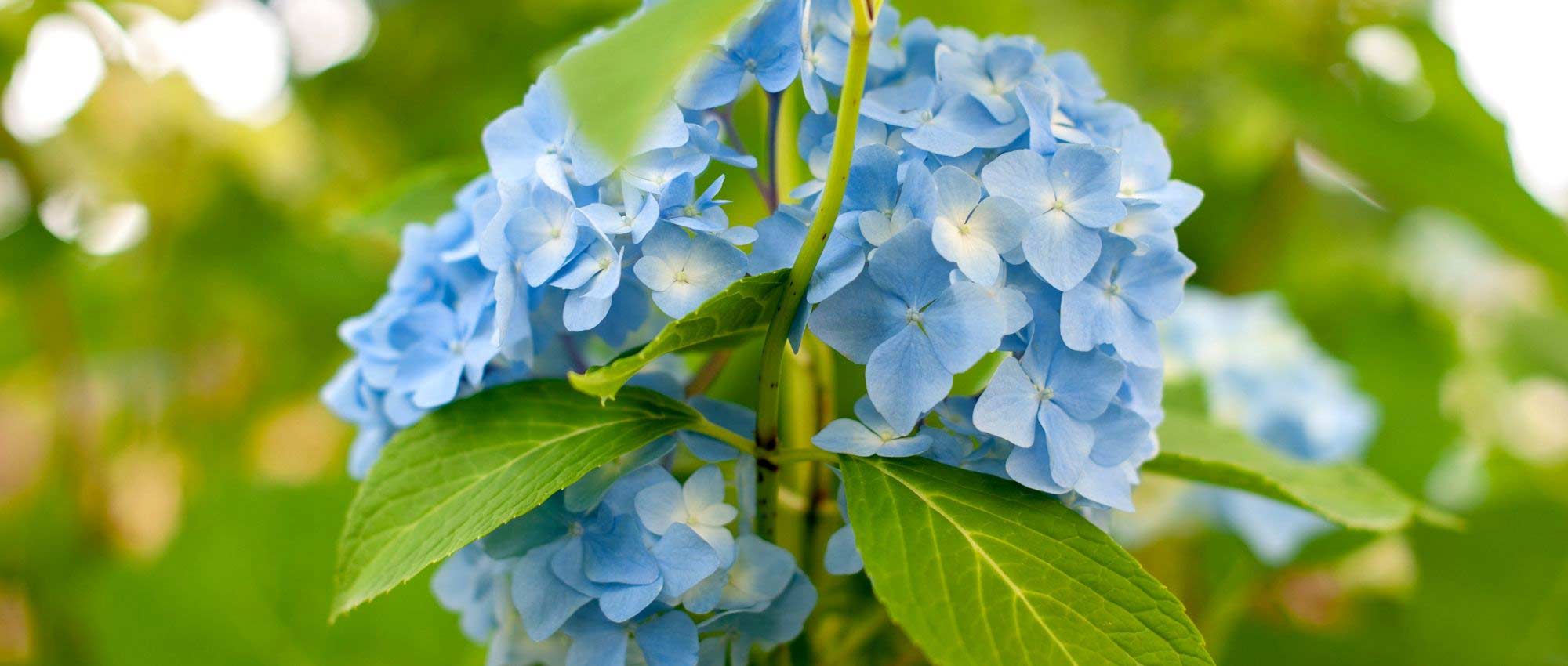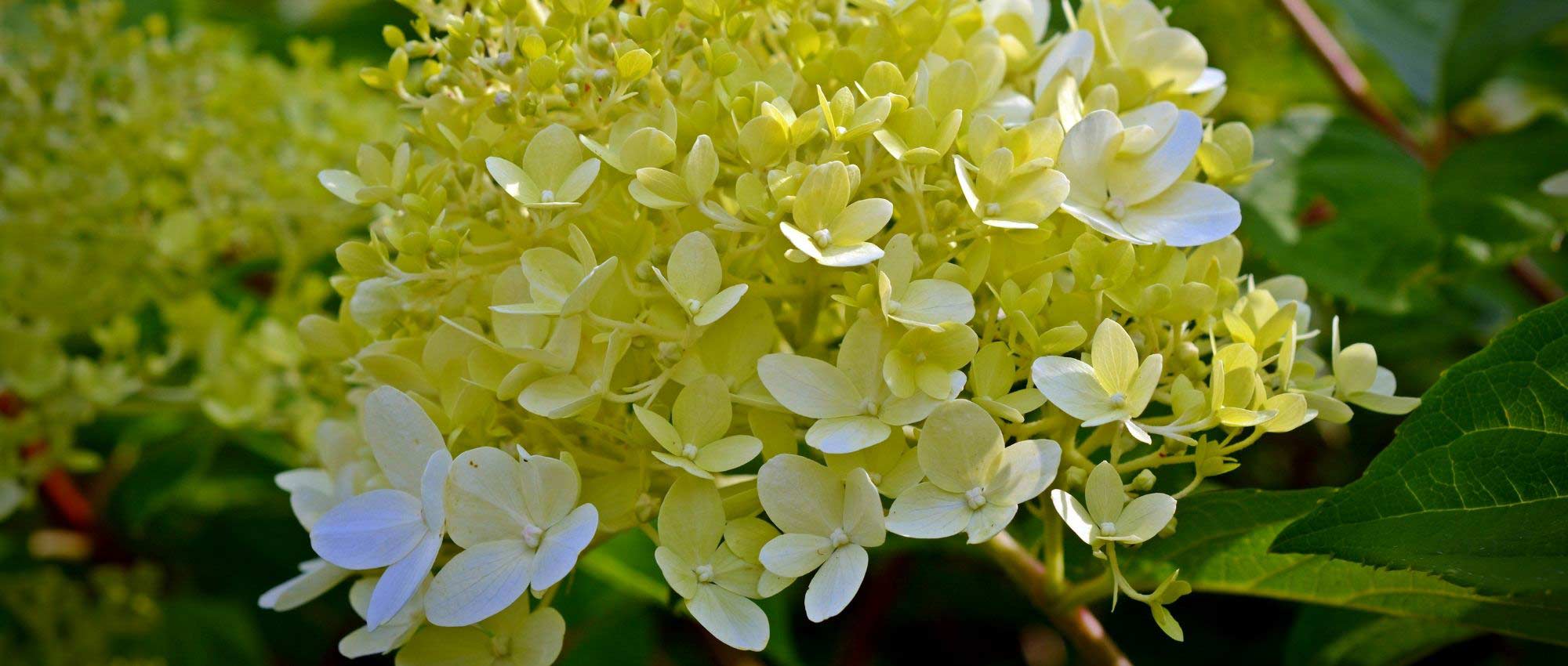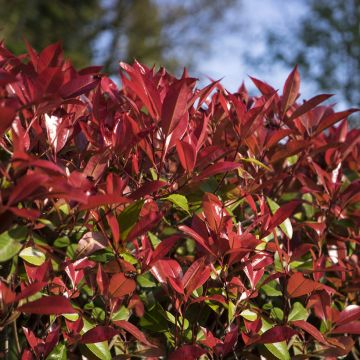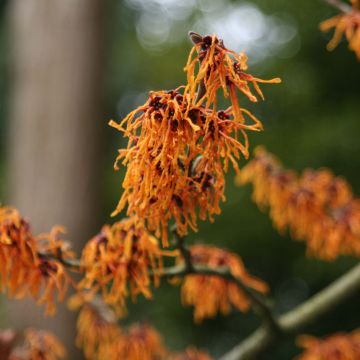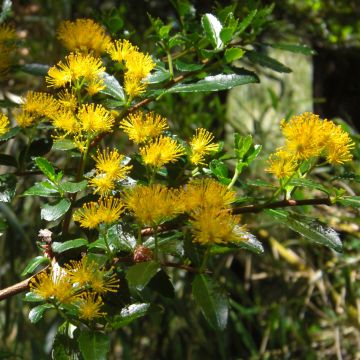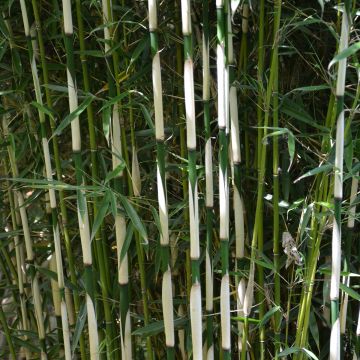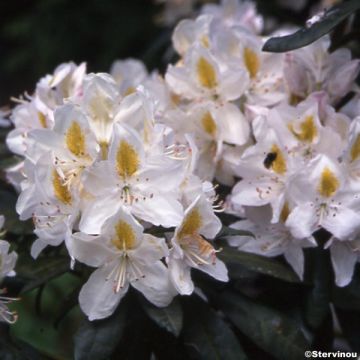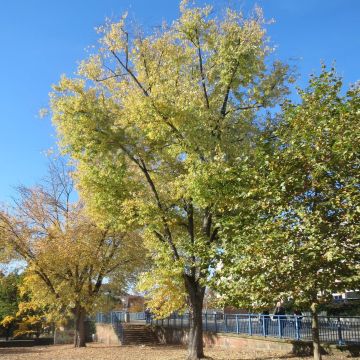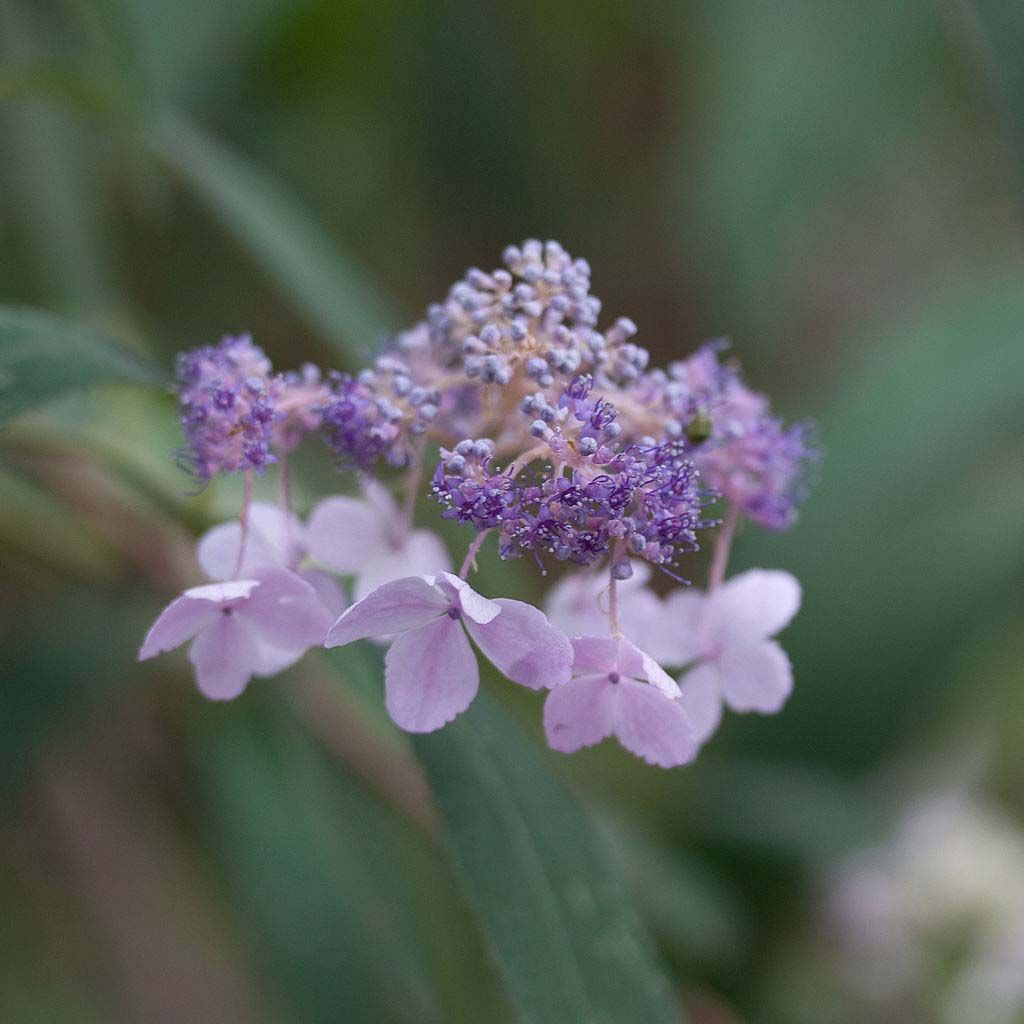

Hydrangea involucrata - Bracted Hydrangea


Hydrangea involucrata - Bracted Hydrangea
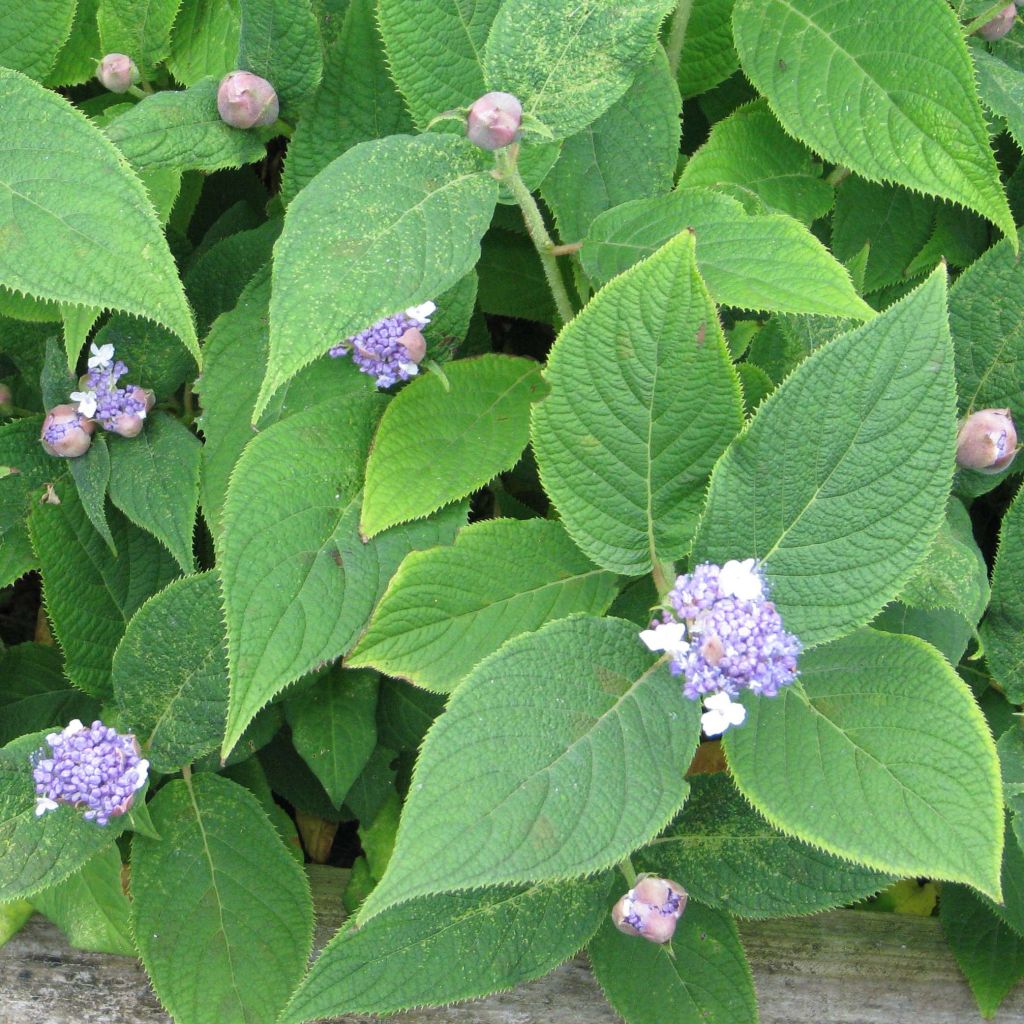

Hydrangea involucrata - Bracted Hydrangea
Hydrangea involucrata - Bracted Hydrangea
Hydrangea involucrata
Bracted Hydrangea
Very beautiful young plant, I am looking forward to seeing the flowers.
Hong , 19/09/2023
Special offer!
Receive a €20 voucher for any order over €90 (excluding delivery costs, credit notes, and plastic-free options)!
1- Add your favorite plants to your cart.
2- Once you have reached €90, confirm your order (you can even choose the delivery date!).
3- As soon as your order is shipped, you will receive an email containing your voucher code, valid for 3 months (90 days).
Your voucher is unique and can only be used once, for any order with a minimum value of €20, excluding delivery costs.
Can be combined with other current offers, non-divisible and non-refundable.
Home or relay delivery (depending on size and destination)
Schedule delivery date,
and select date in basket
This plant carries a 24 months recovery warranty
More information
We guarantee the quality of our plants for a full growing cycle, and will replace at our expense any plant that fails to recover under normal climatic and planting conditions.

Would this plant suit my garden?
Set up your Plantfit profile →
Description
The Hydrangea involucrata, sometimes called involucrata 'azisa', is very different from the large-leaved hydrangeas (macrophylla) of our grandmothers. It rarely exceeds 1m (3 ft 4 in) in height, has a distinctly spreading habit, and blooms abundantly for almost 4 months if faded flowers are removed. Its flowering is as unusual as it is rustic: large rounded flower buds that resemble peonies open into flat, airy inflorescences, with a deep lavender colour in the centre and white on the periphery, a colour that is independent of the soil that hosts the bush. They bloom on original foliage, dark green, embossed and soft to the touch. Unlike many hydrangeas, it tolerates slightly chalky soils but requires a shaded exposure.
The Hydrangea involucrata or dwarf hydrangea, from the Hydrangeaceae family, is native to the high-altitude wet forests of Japan and Taiwan. It is distinguished by its small size but also by the fact that its flowering occurs on the current year's growth and not on one-year-old wood like Hydrangea macrophylla. This means that even if the stems are destroyed by severe, even late frost, the plant will develop new shoots from the base and its flowering will not be affected. The bush is hardy to about -18°C (-0.4 °F).
The plant forms a small bush, wider than tall, about 90 cm (35.4 in) to 1 m (3 ft 4 in) in height and 1.50 m (4 ft 11 in) in spread. The characteristic flower buds of this hydrangea are rounded, the size of peony buds. The beautiful plate-like flower heads of the Hydrangea involucrata, 12 to 15 cm (4.7 to 5.9 in) wide, bloom in large numbers from July to October, more or less early depending on the climate. They are composed of numerous small fertile flowers in blue-mauve buds, gathered in a central disk, surrounded by a few much larger sterile florets, pure white, carried by long peduncles. They are often visited by butterflies. The foliage, a beautiful dark green, covered with numerous short hairs, falls in autumn. It consists of oval leaves measuring about 8-10cm (3.1-3.9 in) long by 6-8cm (2.4-3.1 in) wide, finely toothed along the edges, strongly veined and with a wavy appearance.
The Hydrangea involucrata requires a cool environment, plant it in partial shade or not too dense shade, in a place protected from cold, dry winds, in a soil that remains moist, not too compact, slightly acidic, neutral, or even slightly chalky. This rustic variety, which blooms while others are already almost faded, extends the flowering period of hydrangeas. Plant it at the edge of woodlands, at the back of a flower bed, under tall trees, or near a shaded wall of the house. It can be accompanied by ferns, hostas, Japanese knotweed, Thalictrums.
Hydrangea involucrata - Bracted Hydrangea in pictures
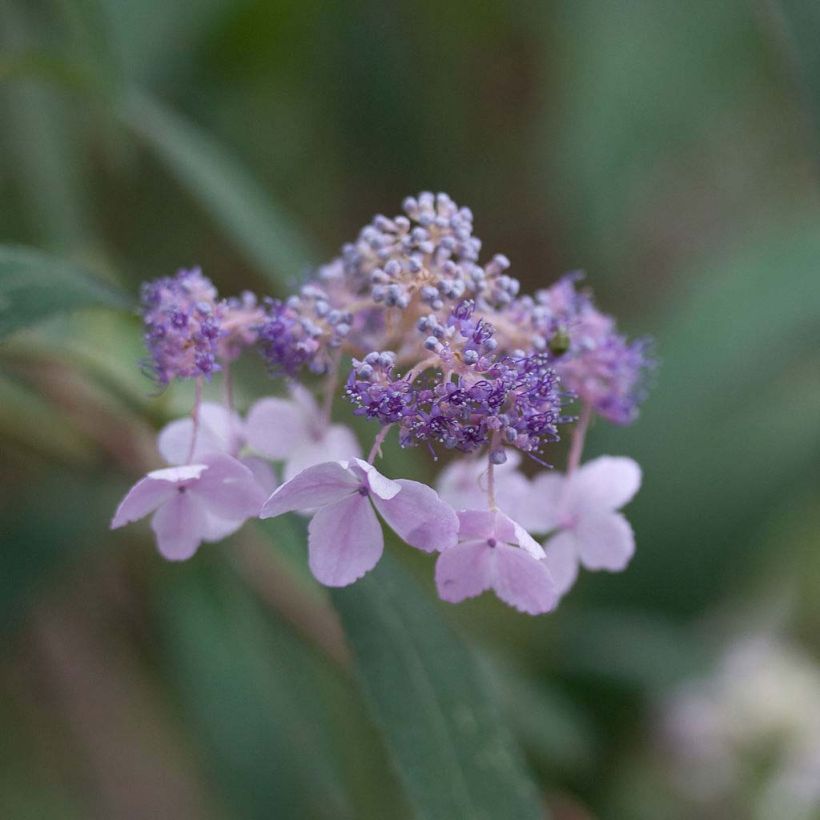

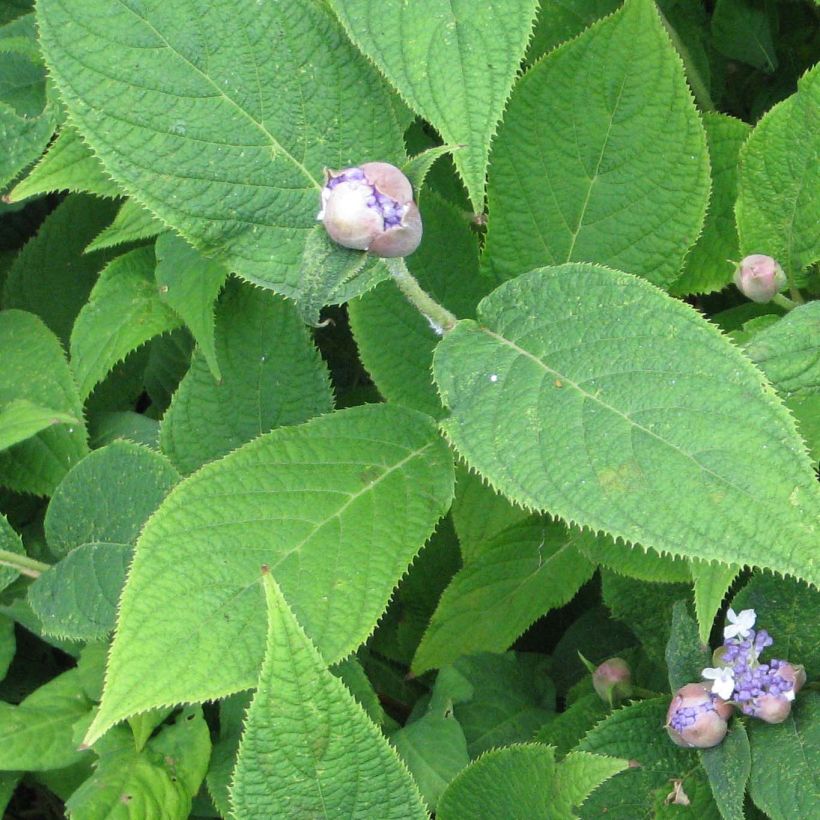

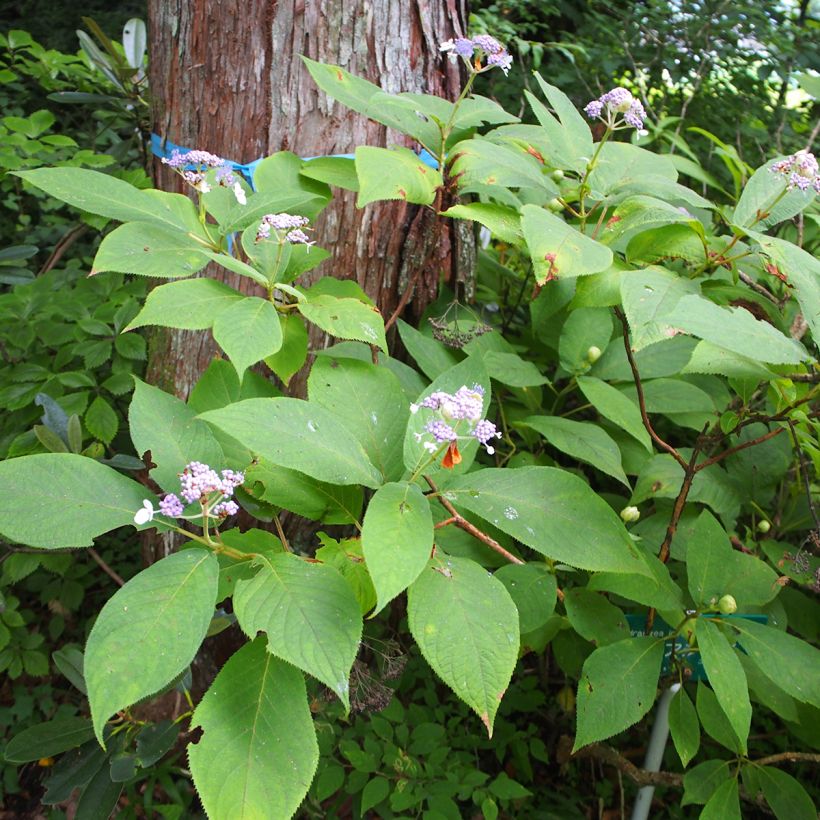

Plant habit
Flowering
Foliage
Botanical data
Hydrangea
involucrata
Hydrangeaceae
Bracted Hydrangea
Cultivar or hybrid
Planting and care
Plant the Hydrangea involucrata in a soil that remains moist, humus-bearing or enriched with leaf compost, worked deeply. It prefers soils that are slightly acidic or neutral, but tolerates a little limestone in the soil. Choose a semi-shade or light shade exposure, sheltered from cold and dry winds. Prune it fairly short in late winter or early spring, as this will encourage the development of new, highly floriferous shoots.
Planting period
Intended location
Care
Planting & care advice
-
, onOrder confirmed
Reply from on Promesse de fleurs
Similar products
Haven't found what you were looking for?
Hardiness is the lowest winter temperature a plant can endure without suffering serious damage or even dying. However, hardiness is affected by location (a sheltered area, such as a patio), protection (winter cover) and soil type (hardiness is improved by well-drained soil).

Photo Sharing Terms & Conditions
In order to encourage gardeners to interact and share their experiences, Promesse de fleurs offers various media enabling content to be uploaded onto its Site - in particular via the ‘Photo sharing’ module.
The User agrees to refrain from:
- Posting any content that is illegal, prejudicial, insulting, racist, inciteful to hatred, revisionist, contrary to public decency, that infringes on privacy or on the privacy rights of third parties, in particular the publicity rights of persons and goods, intellectual property rights, or the right to privacy.
- Submitting content on behalf of a third party;
- Impersonate the identity of a third party and/or publish any personal information about a third party;
In general, the User undertakes to refrain from any unethical behaviour.
All Content (in particular text, comments, files, images, photos, videos, creative works, etc.), which may be subject to property or intellectual property rights, image or other private rights, shall remain the property of the User, subject to the limited rights granted by the terms of the licence granted by Promesse de fleurs as stated below. Users are at liberty to publish or not to publish such Content on the Site, notably via the ‘Photo Sharing’ facility, and accept that this Content shall be made public and freely accessible, notably on the Internet.
Users further acknowledge, undertake to have ,and guarantee that they hold all necessary rights and permissions to publish such material on the Site, in particular with regard to the legislation in force pertaining to any privacy, property, intellectual property, image, or contractual rights, or rights of any other nature. By publishing such Content on the Site, Users acknowledge accepting full liability as publishers of the Content within the meaning of the law, and grant Promesse de fleurs, free of charge, an inclusive, worldwide licence for the said Content for the entire duration of its publication, including all reproduction, representation, up/downloading, displaying, performing, transmission, and storage rights.
Users also grant permission for their name to be linked to the Content and accept that this link may not always be made available.
By engaging in posting material, Users consent to their Content becoming automatically accessible on the Internet, in particular on other sites and/or blogs and/or web pages of the Promesse de fleurs site, including in particular social pages and the Promesse de fleurs catalogue.
Users may secure the removal of entrusted content free of charge by issuing a simple request via our contact form.
The flowering period indicated on our website applies to countries and regions located in USDA zone 8 (France, the United Kingdom, Ireland, the Netherlands, etc.)
It will vary according to where you live:
- In zones 9 to 10 (Italy, Spain, Greece, etc.), flowering will occur about 2 to 4 weeks earlier.
- In zones 6 to 7 (Germany, Poland, Slovenia, and lower mountainous regions), flowering will be delayed by 2 to 3 weeks.
- In zone 5 (Central Europe, Scandinavia), blooming will be delayed by 3 to 5 weeks.
In temperate climates, pruning of spring-flowering shrubs (forsythia, spireas, etc.) should be done just after flowering.
Pruning of summer-flowering shrubs (Indian Lilac, Perovskia, etc.) can be done in winter or spring.
In cold regions as well as with frost-sensitive plants, avoid pruning too early when severe frosts may still occur.
The planting period indicated on our website applies to countries and regions located in USDA zone 8 (France, United Kingdom, Ireland, Netherlands).
It will vary according to where you live:
- In Mediterranean zones (Marseille, Madrid, Milan, etc.), autumn and winter are the best planting periods.
- In continental zones (Strasbourg, Munich, Vienna, etc.), delay planting by 2 to 3 weeks in spring and bring it forward by 2 to 4 weeks in autumn.
- In mountainous regions (the Alps, Pyrenees, Carpathians, etc.), it is best to plant in late spring (May-June) or late summer (August-September).
The harvesting period indicated on our website applies to countries and regions in USDA zone 8 (France, England, Ireland, the Netherlands).
In colder areas (Scandinavia, Poland, Austria...) fruit and vegetable harvests are likely to be delayed by 3-4 weeks.
In warmer areas (Italy, Spain, Greece, etc.), harvesting will probably take place earlier, depending on weather conditions.
The sowing periods indicated on our website apply to countries and regions within USDA Zone 8 (France, UK, Ireland, Netherlands).
In colder areas (Scandinavia, Poland, Austria...), delay any outdoor sowing by 3-4 weeks, or sow under glass.
In warmer climes (Italy, Spain, Greece, etc.), bring outdoor sowing forward by a few weeks.






























